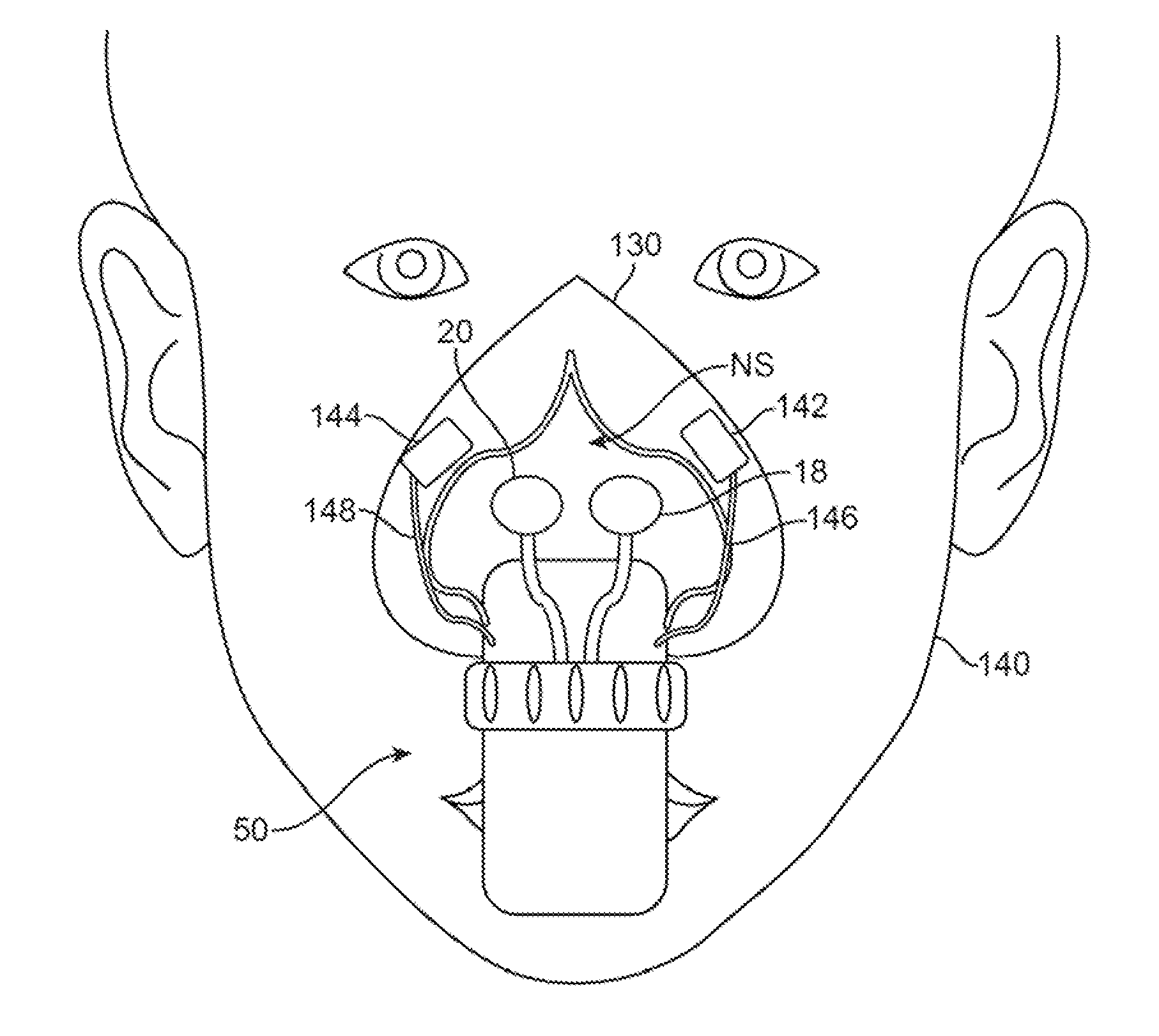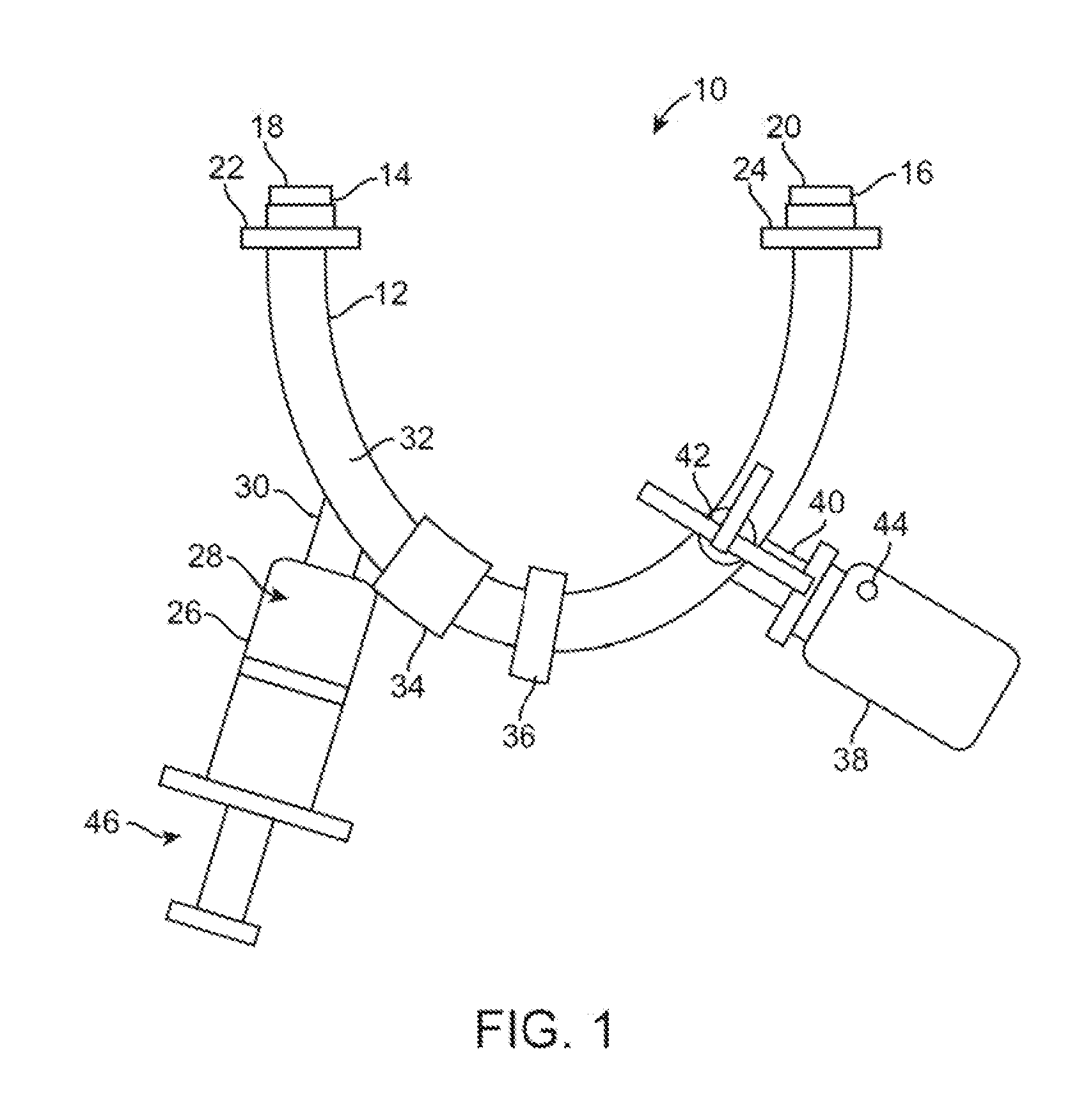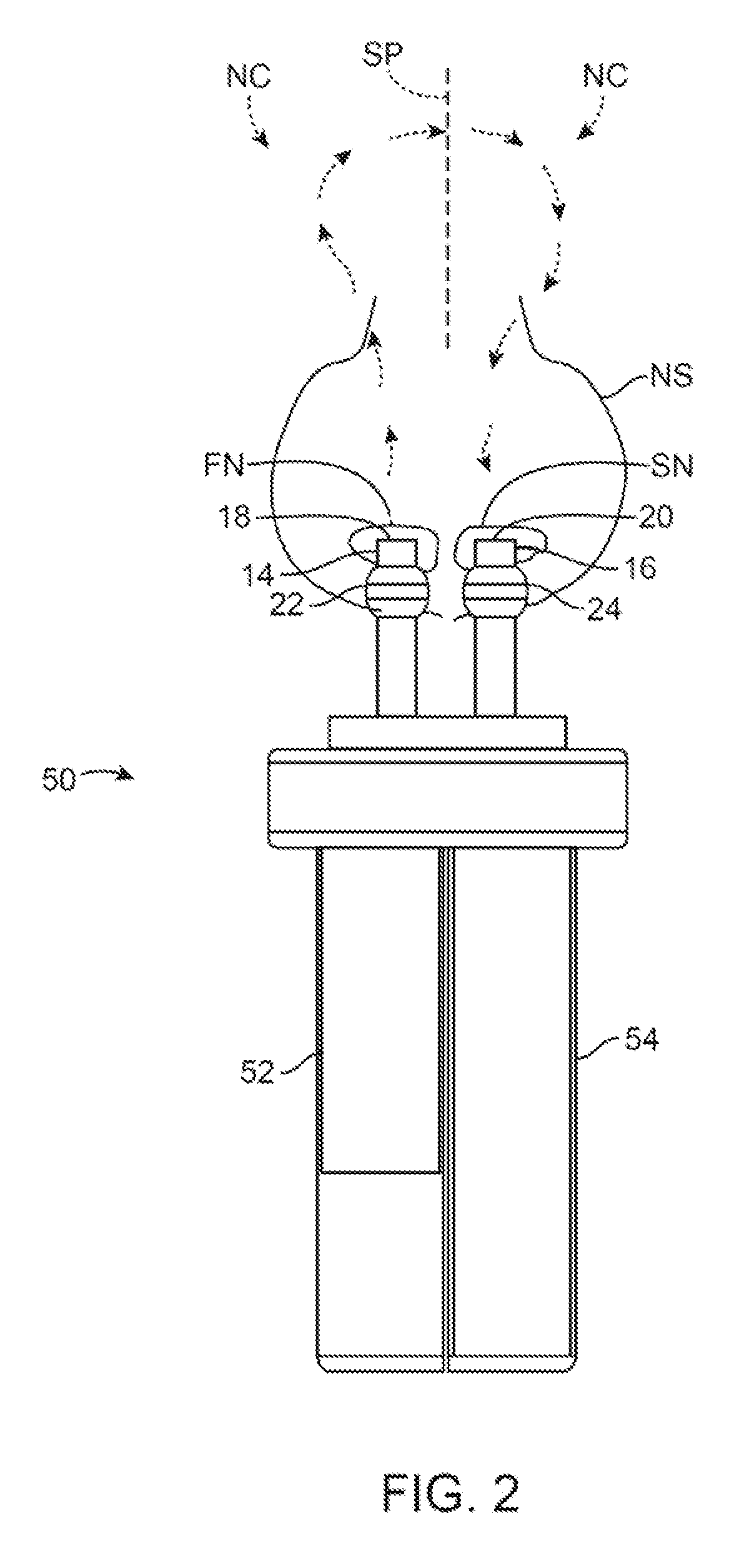Nasal irrigation systems
a technology of nasal irrigation and saline, which is applied in the field of nasal irrigation systems, can solve the problems of large and bulky devices for users to handle, ineffective simple irrigation through the nasal cavity, and large device size, and achieve the effect of better disruption of debris within the nasal cavity
- Summary
- Abstract
- Description
- Claims
- Application Information
AI Technical Summary
Benefits of technology
Problems solved by technology
Method used
Image
Examples
Embodiment Construction
[0042]In irrigating and / or rinsing a subject's nasal cavity, any one of several features may be utilized individually and / or in combination to effectuate a thorough irrigation treatment. Generally, one variation of the device may incorporate a fluid reservoir which holds a volume of irrigating fluid, such as saline, as well as a capture reservoir for storing or capturing the effluent material. The irrigation fluid may be introduced into one nostril and drawn through the nasal cavity and out the other nostril. One feature may incorporate a staged treatment procedure which allows for an initial infusion or flushing of irrigation fluid, circulation of the fluid, and subsequent flushing of the effluent from a subject's nasal cavity. Other features may incorporate a reversible flow of the irrigation fluid during an irrigation procedure as well as the use of vibration to potentially disrupt debris within the nasal cavity to facilitate the mixing and removal of the debris with the irrigate...
PUM
 Login to View More
Login to View More Abstract
Description
Claims
Application Information
 Login to View More
Login to View More - R&D
- Intellectual Property
- Life Sciences
- Materials
- Tech Scout
- Unparalleled Data Quality
- Higher Quality Content
- 60% Fewer Hallucinations
Browse by: Latest US Patents, China's latest patents, Technical Efficacy Thesaurus, Application Domain, Technology Topic, Popular Technical Reports.
© 2025 PatSnap. All rights reserved.Legal|Privacy policy|Modern Slavery Act Transparency Statement|Sitemap|About US| Contact US: help@patsnap.com



